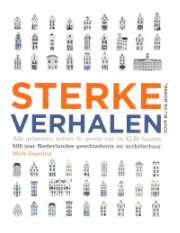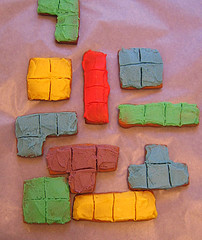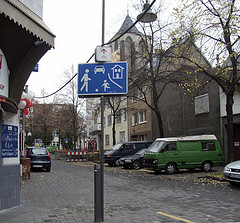 The twenty Dutch book stores of the Polare chain have closed their doors—temporarily, they say.
The twenty Dutch book stores of the Polare chain have closed their doors—temporarily, they say.
Initial reports said that the closure came about because Centraal Boekhuis, the shared depot of most book stores in the Netherlands, refused to deliver any more books until Polare paid its bills. According to nu.nl however Central Boekhuis has resumed delivery of books to Polare. The closure came as a surprise to the distributor.
Whatever the real reason behind Polare’s action is, it seems clear that the chain is in trouble.
Punters have started producing explanations for the bad weather Polare has found itself in. The Internet is a big bogeyman according to Z24’s Thijs Peters. Regular customers are buying books on the Internet and students who were automatically referred to Polare’s predecessors at the start of the academic year, now buy their text books on-line.
In NRC competing book store Athenaeum gets plenty of space to explain Polare’s alleged downfall. Manager Maarten Asscher calls Polare “too big to succeed”. “If you want ‘the complete book store’, you go online. When customers go to a brick and mortar store, they go there for the inspiration and for professional and thoughtful advice. You don’t need 3,000 square metres of floor space for that.”
Polare was born last year out of the merger between Selexyz and De Slegte, the latter being a chain of second hand book stores. If you ask me, what got Selexyz into a spot where they had to merge with another floundering chain was its late entry to the Internet, not helped by having a name that is difficult to spell and therefore to google.
One of Polare’s constituent stores is situated in a former Dominican church in Maastricht and was called the most beautiful book store in the world by a British newspaper in 2008. If you are having trouble recognising the irony: the word is more popular than ever, but the pulpit? Meh.
(Photo by Teemu Mäntynen, some rights reserved; more pics of the church turned book store can be found here)

 The Rochdale housing corporation is using a legal loophole to charge top rents for slums in the Jeruzalem neighbourhood of Amsterdam,
The Rochdale housing corporation is using a legal loophole to charge top rents for slums in the Jeruzalem neighbourhood of Amsterdam,  Last October Mark Zegeling published a book called Sterke Verhalen voor bij de Borrel (tall tales to drink to) in which he explores the houses that KLM’s famous Delftware replicas are based on.
Last October Mark Zegeling published a book called Sterke Verhalen voor bij de Borrel (tall tales to drink to) in which he explores the houses that KLM’s famous Delftware replicas are based on. As I was leafing through
As I was leafing through 




